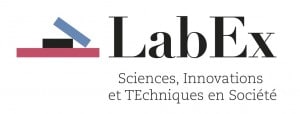@inproceedings{nokey,
title = {Factors Associated with Collaboration Networks in ASEE Conference Papers},
author = {Sherif Abdelhamid and Yousef Jalali and Andrew Katz},
url = {https://peer.asee.org/factors-associated-with-collaboration-networks-in-asee-conference-papers},
year = {2021},
date = {2021-07-26},
booktitle = {2021 ASEE Virtual Annual Conference Content Access},
publisher = {ASEE Conferences},
address = {Virtual Conference},
abstract = {Research collaborations are essential to advance rigorous scholarship, perform transformative science, and accelerate engineering education innovation. With this in mind, the engineering education community should continue investigating and evaluating the key factors that hinder or promote collaborative research within and across institutions, especially amidst efforts to continue to grow the field. Over the last few decades, research collaborations across institutions have grown significantly—however, few studies have examined the relationship between such collaborations and the institutional characteristics such as ranking, geographic location, or classifications (e.g., the Carnegie Classification of Higher Education Institutions) when studying collaboration networks. Our paper uses social network analysis (SNA) to help fill this gap by examining how some of these institutional characteristics are related to the institutions' collaborations and network positions. Social network analysis has emerged as a useful approach to measure research collaboration by evaluating several types of collaboration networks, including co-authorship networks. In this paper, we consider the institution network. Nodes in this type of network represent institutions, while links represent the pairwise collaboration between two institutions. Each link also has a weight that represents the collaboration frequency. The links form a social space that we can map and analyze to reveal systematic patterns in the broader engineering education community that might otherwise pass unobserved. For this study, we collected information about all papers published between 1996 and 2019 in the American Society for Engineering Education (ASEE) annual conference proceedings. From this dataset, we built the inter-institutional collaboration network and identified structural network properties, connected components, and modularity classes. The network data were then linked to data regarding each institution's (i) Carnegie classification, (ii) rankings based on the 2020 QS World University Rankings, and (iii) geographic location. With this augmented dataset, we were able to answer research questions about factors associated with inter-institutional collaborations through statistical analysis. In doing so, we identify the key patterns, trends, and associations from our networked data. Among the results, we found that a research institution's classification is significantly related to its network positions in the collaboration network, specifically its modularity class. Additionally, we found correlations between the institutions' centrality measures in the network, including the degree centrality, betweenness centrality, and structural holes. Our findings also indicate an association between the institutions' geographical proximity and their research collaborations. Overall, this study provides a lens through which engineering education researchers, faculty members, and administrators can understand the current state of research collaborations within and across institutions. The results can help researchers answer (and raise more) important research questions, support administrators in making decisions on funding and institutional partnerships, and help faculty members design and develop more effective programs that facilitate research collaborations.},
note = {https://peer.asee.org/37173},
keywords = {},
pubstate = {published},
tppubtype = {inproceedings}
}






